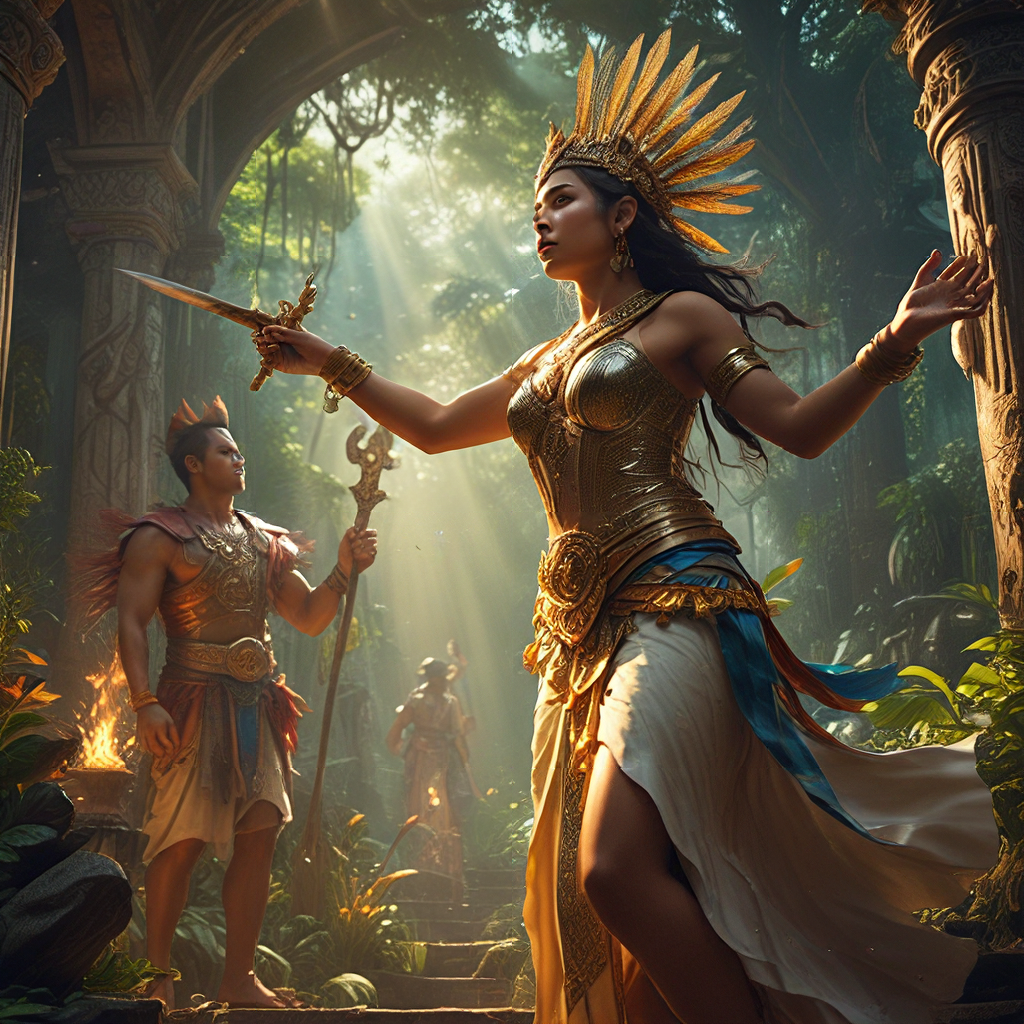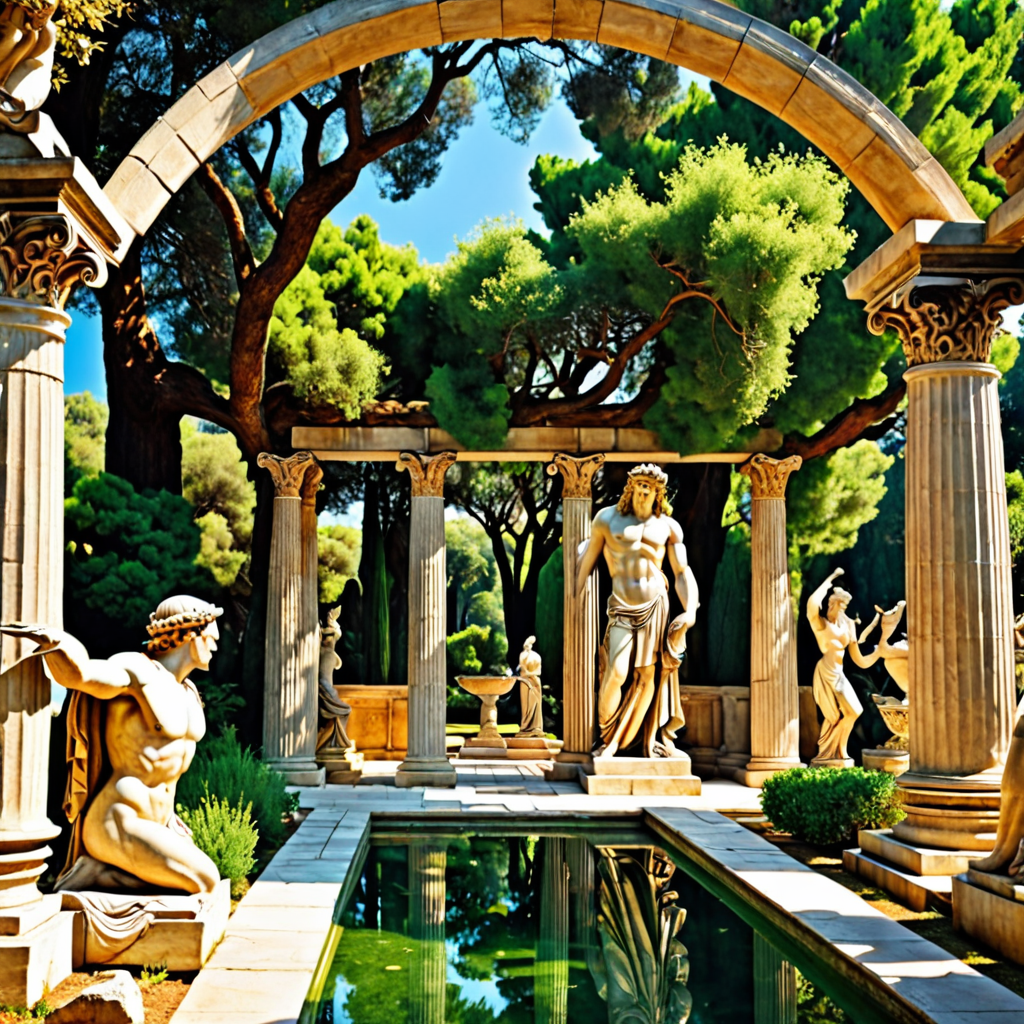A Realm of Enchantment: Exploring Filipino Mythology
Filipino mythology is a rich tapestry woven with enchanting tales of mythical creatures, powerful spirits, and magical beings. This vibrant world of folklore offers a captivating glimpse into the beliefs and values of the Filipino people. From the mischievous "kapre" guarding the forest to the alluring "aswang" lurking in the shadows, Philippine mythology is brimming with fascinating creatures that embody the awe and wonder of the natural world.
The enchantment embedded in these stories is a testament to the Filipinos' deep connection to their environment, their respect for ancestral spirits, and their inherent belief in the unseen forces that shape their lives. These mythical tales serve as a window into the Filipino soul, revealing a fascinating blend of animistic beliefs, ancestor worship, and indigenous spiritual practices.
The Enchanting World of Philippine Folklore
Filipino folklore, the heart of Philippine mythology, is a treasure trove of captivating stories passed down through generations. These tales, often told around crackling campfires or whispered under starlit skies, are filled with magical elements and captivating characters.
From the playful "tikbalang," a horse-like creature with human features, to the enigmatic "duwende," a tiny spirit who dwells in the earth, each creature possesses unique abilities and characteristics that reflect the diverse landscape and cultural beliefs of the Philippines. These creatures often serve as guides, guardians, or even tricksters in the stories, shaping the moral compass and worldview of the Filipinos.
The Power of Enchantment: A Defining Aspect of Filipino Mythology
Enchantment is a central theme in Filipino mythology, permeating every aspect of the stories, from the creatures themselves to the rituals and practices associated with them. This power stems from the inherent belief that the world is imbued with spiritual forces, often residing in nature and ancestral spirits.
Enchantment manifests in various forms, from the ability to shapeshift and control the elements to the power to grant wishes and bestow blessings. These supernatural abilities are often attributed to mythical creatures and spirits, showcasing the Filipinos' deep respect for the supernatural and their belief in the transformative power of the unseen.
Mythical Creatures and Their Enchanting Abilities
The Filipino pantheon of mythical creatures is a diverse and fascinating array, each with unique abilities rooted in enchantment.
- The "Kapre" is a giant, cigar-smoking tree spirit who guards the forests and embodies the strength and resilience of nature.
- The "Manananggal" is a terrifying creature who can detach her upper body, allowing her to fly and prey on unsuspecting victims. This creature embodies the fear of the unknown and the dangers lurking in the shadows.
- The "Sirena", a beautiful mermaid who enchants sailors with her enchanting voice, represents the allure and danger of the sea.
These are just a few examples of the many enchanting creatures that populate Filipino mythology, each showcasing the power of enchantment and the Filipinos' fascination with the supernatural.
Enchantment in Rituals and Practices
Enchantment plays a prominent role in Filipino rituals and practices, often serving as a bridge between the spiritual and the material world.
- "Pangangaluluwa", a traditional ritual performed during All Souls' Day, involves singing and chanting to guide the spirits of the deceased back to the afterlife. This practice highlights the Filipinos' belief in the interconnectedness of the living and the dead.
- "Pasasalamat", a ritual of giving thanks to nature and the ancestors, often involves offering food, flowers, and prayers to appease spirits and request blessings. This practice underscores the Filipinos' respect for the forces that shape their lives.
These rituals and practices demonstrate the enduring power of enchantment in Filipino culture, showcasing how these beliefs continue to shape the lives and traditions of the Filipino people.
The Significance of Enchantment in Filipino Society
Enchantment, deeply embedded in Filipino mythology, plays a crucial role in shaping Filipino society, influencing social norms, ethical values, and even daily life. These enchanting tales serve as a moral compass, offering lessons about right and wrong, the consequences of actions, and the importance of respect for nature and ancestral spirits. For instance, stories about the "aswang," a shape-shifting creature that preys on unsuspecting victims, serve as a cautionary tale about the dangers of greed and malice. These mythical narratives highlight the importance of community, cooperation, and mutual respect for the well-being of everyone.
The belief in enchantment also fosters a strong sense of community and kinship. Shared stories and rituals strengthen bonds, creating a common cultural identity and a shared understanding of the world. Enchantment, therefore, isn't merely a fantastical element; it's an integral part of Filipino social fabric, shaping their worldview, beliefs, and practices.
The Role of Enchantment in Shaping Filipino Identity
The enduring power of enchantment in Filipino mythology goes beyond mere folklore. It's a crucial element that shapes and defines Filipino identity. The unique blend of animistic beliefs, ancestor worship, and indigenous spiritual practices, intertwined with enchantment, gives Filipinos a distinct cultural heritage.
These enthralling stories, passed down through generations, offer a profound connection to the past, instilling a sense of pride and belonging. They remind Filipinos of their ancestral roots, their connection to the land, and their shared history. Enchantment also plays a significant role in shaping Filipino values, emphasizing the importance of respect, gratitude, humility, and resilience.
Filipino mythology, with its captivating tales of enchantment, is a rich tapestry woven with cultural heritage and identity. It serves as a powerful reminder of the values, beliefs, and traditions that make Filipinos who they are.
Theories on the Origins of Enchantment in Filipino Mythology
The origins of enchantment in Filipino mythology are steeped in a fascinating blend of historical, cultural, and environmental influences. Anthropologists and scholars have proposed various theories to explain the prevalence of enchantment in Filipino folklore.
One prevailing theory suggests that animistic belief systems, prevalent in many indigenous cultures, heavily influenced the development of Filipino mythology. This theory proposes that early Filipinos, deeply connected to nature, saw spirits and magical forces residing in everything around them. This belief system, combined with a reverence for ancestral spirits, led to the creation of tales of enchanted creatures and magical powers.
Another theory points to the impact of colonialism on Filipino mythology. During Spanish colonization, Filipinos were exposed to European folklore and religious beliefs. This exposure led to the fusion of indigenous beliefs with Catholic ideals, resulting in a unique blend of magical elements and Christian symbolism.
Exploring the Influence of Nature on Enchantment
The Philippines' diverse and breathtaking natural landscape has undoubtedly played a significant role in shaping the enchanting world of Filipino mythology. This rich biodiversity, with its lush forests, towering mountains, vast oceans, and diverse ecosystems, has inspired a profound respect for nature and a belief in its inherent power.
The enchanting creatures of Filipino mythology often reflect the unique features of the natural world. The "kapre," a giant tree spirit, embodies the power and resilience of the forests. The "manananggal," a terrifying creature that preys on unsuspecting victims, represents the dangers lurking in the shadows of the night. The "sirena," a beautiful mermaid who enchants sailors with her voice, embodies the allure and dangers of the vast ocean.
The Filipinos' deep connection to their natural environment, intertwined with their belief in ancestral spirits and supernatural forces, has led to the creation of enchanting stories that resonate with their unique cultural identity.
The Enduring Power of Enchantment in Contemporary Filipino Culture
Although times have changed, the enchanting stories of Filipino mythology continue to hold a strong presence in contemporary Filipino culture. These tales persist in popular culture, literature, music, and art, reminding Filipinos of their heritage and their connection to the past.
Modern Filipino artists often draw inspiration from their ancient mythology, creating captivating works that showcase the enduring power of enchantment. Writers weave elements of Filipino folklore into their stories, exploring themes of cultural identity, social commentary, and the timeless power of imagination.
Even in modern society, the belief in supernatural forces and ancestral spirits continues to influence some aspects of life, from traditional rituals and practices to everyday beliefs and superstitions. The enduring power of enchantment in Filipino mythology is a testament to its cultural significance and its ability to transcend the boundaries of time.
FAQ
Q: What are some of the most popular Filipino mythical creatures?
A: Some of the most popular Filipino mythical creatures include the "kapre," a giant tree spirit; the "aswang," a shape-shifting creature; the "tikbalang," a horse-like creature with human features; the "duwende," a tiny spirit who dwells in the earth; and the "manananggal," a terrifying creature that can detach her upper body.
Q: What are some of the common themes in Filipino mythology?
A: Common themes in Filipino mythology include the importance of respect for nature and ancestral spirits, the consequences of greed and malice, the power of community, and the importance of resilience.
Q: How does Filipino mythology reflect the country's cultural identity?
A: Filipino mythology is a reflection of the country's rich cultural heritage, blending animistic beliefs, ancestor worship, and indigenous spiritual practices. These stories shape Filipino values, beliefs, and traditions, offering a profound connection to the past and a sense of shared identity.
Q: What are some examples of the enduring power of enchantment in contemporary Filipino culture?
A: The enduring power of enchantment can be seen in modern Filipino art, literature, music, and even everyday beliefs and superstitions. Artists, writers, and musicians often draw inspiration from Filipino folklore, reminding Filipinos of their heritage and the timeless power of imagination.



